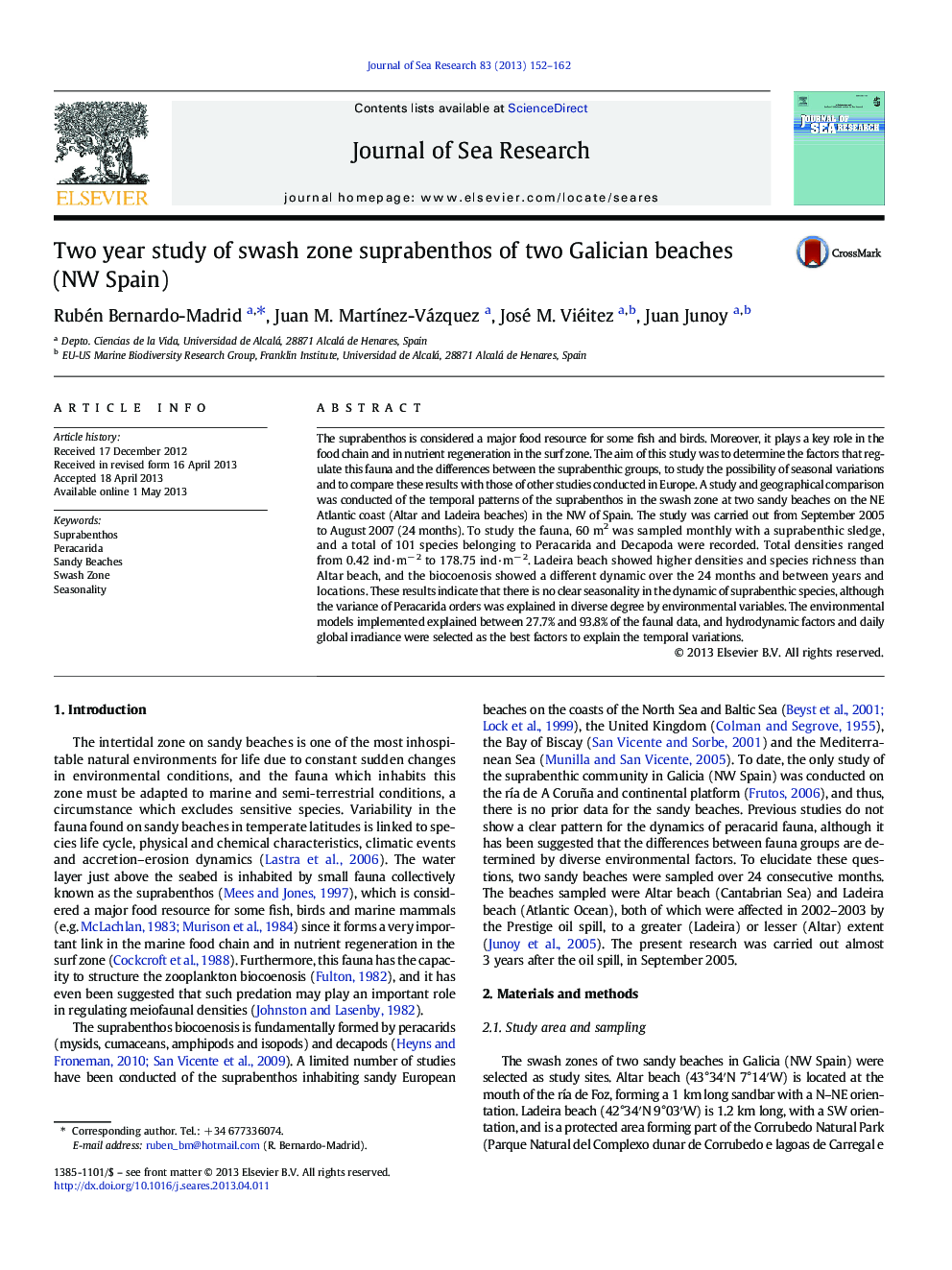| کد مقاله | کد نشریه | سال انتشار | مقاله انگلیسی | نسخه تمام متن |
|---|---|---|---|---|
| 6387482 | 1627491 | 2013 | 11 صفحه PDF | دانلود رایگان |

- First swash zone suprabenthic study that reaches 24 consecutive months.
- Contrast the role of the environmental factors in the different faunistic groups.
- Study over two sandy beaches affected by the Prestige oil-spill two years before.
- The two beaches showed different suprabenthic characteristics.
The suprabenthos is considered a major food resource for some fish and birds. Moreover, it plays a key role in the food chain and in nutrient regeneration in the surf zone. The aim of this study was to determine the factors that regulate this fauna and the differences between the suprabenthic groups, to study the possibility of seasonal variations and to compare these results with those of other studies conducted in Europe. A study and geographical comparison was conducted of the temporal patterns of the suprabenthos in the swash zone at two sandy beaches on the NE Atlantic coast (Altar and Ladeira beaches) in the NW of Spain. The study was carried out from September 2005 to August 2007 (24 months). To study the fauna, 60 m2 was sampled monthly with a suprabenthic sledge, and a total of 101 species belonging to Peracarida and Decapoda were recorded. Total densities ranged from 0.42 ind·mâ 2 to 178.75 ind·mâ 2. Ladeira beach showed higher densities and species richness than Altar beach, and the biocoenosis showed a different dynamic over the 24 months and between years and locations. These results indicate that there is no clear seasonality in the dynamic of suprabenthic species, although the variance of Peracarida orders was explained in diverse degree by environmental variables. The environmental models implemented explained between 27.7% and 93.8% of the faunal data, and hydrodynamic factors and daily global irradiance were selected as the best factors to explain the temporal variations.
Journal: Journal of Sea Research - Volume 83, October 2013, Pages 152-162